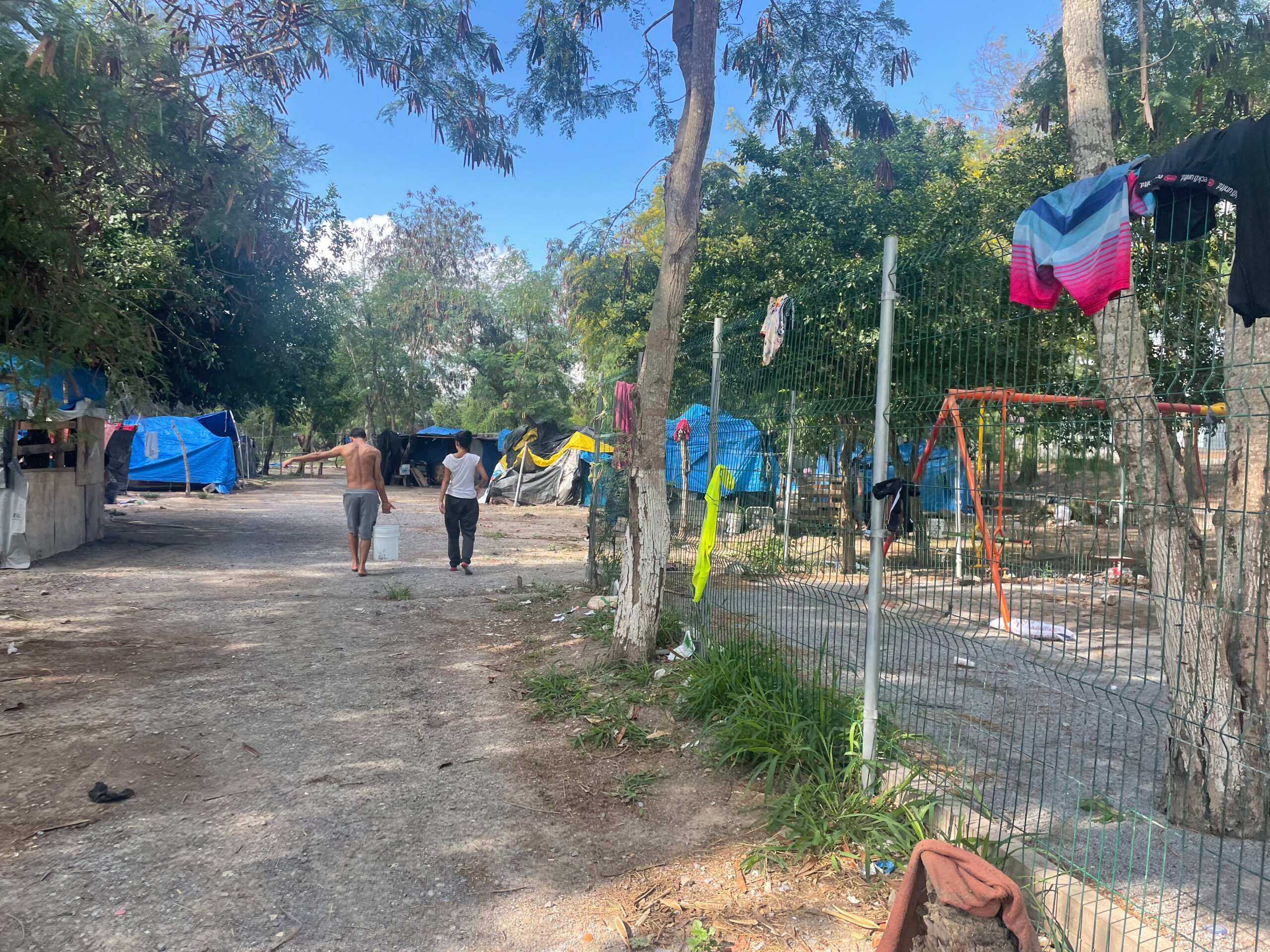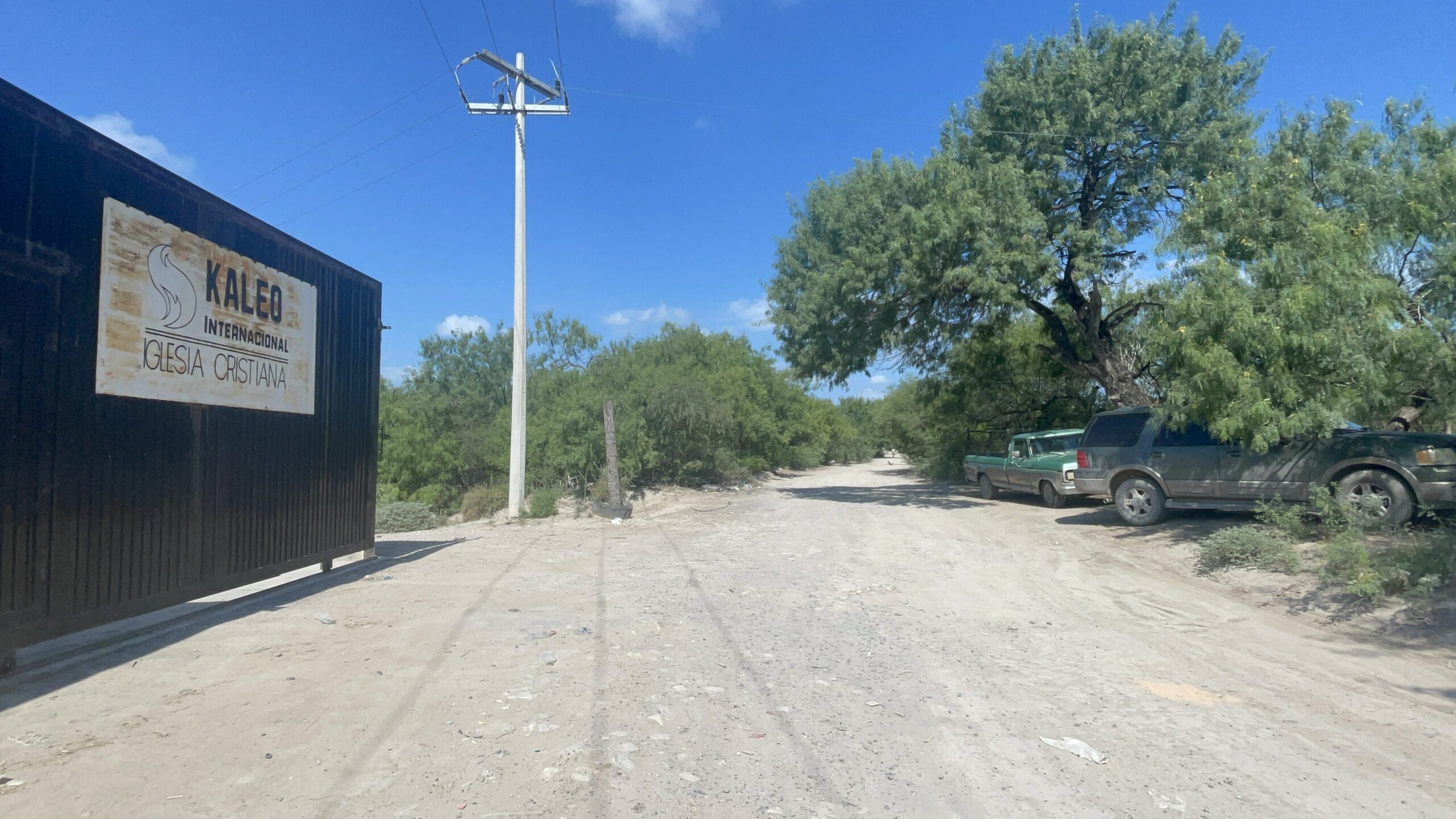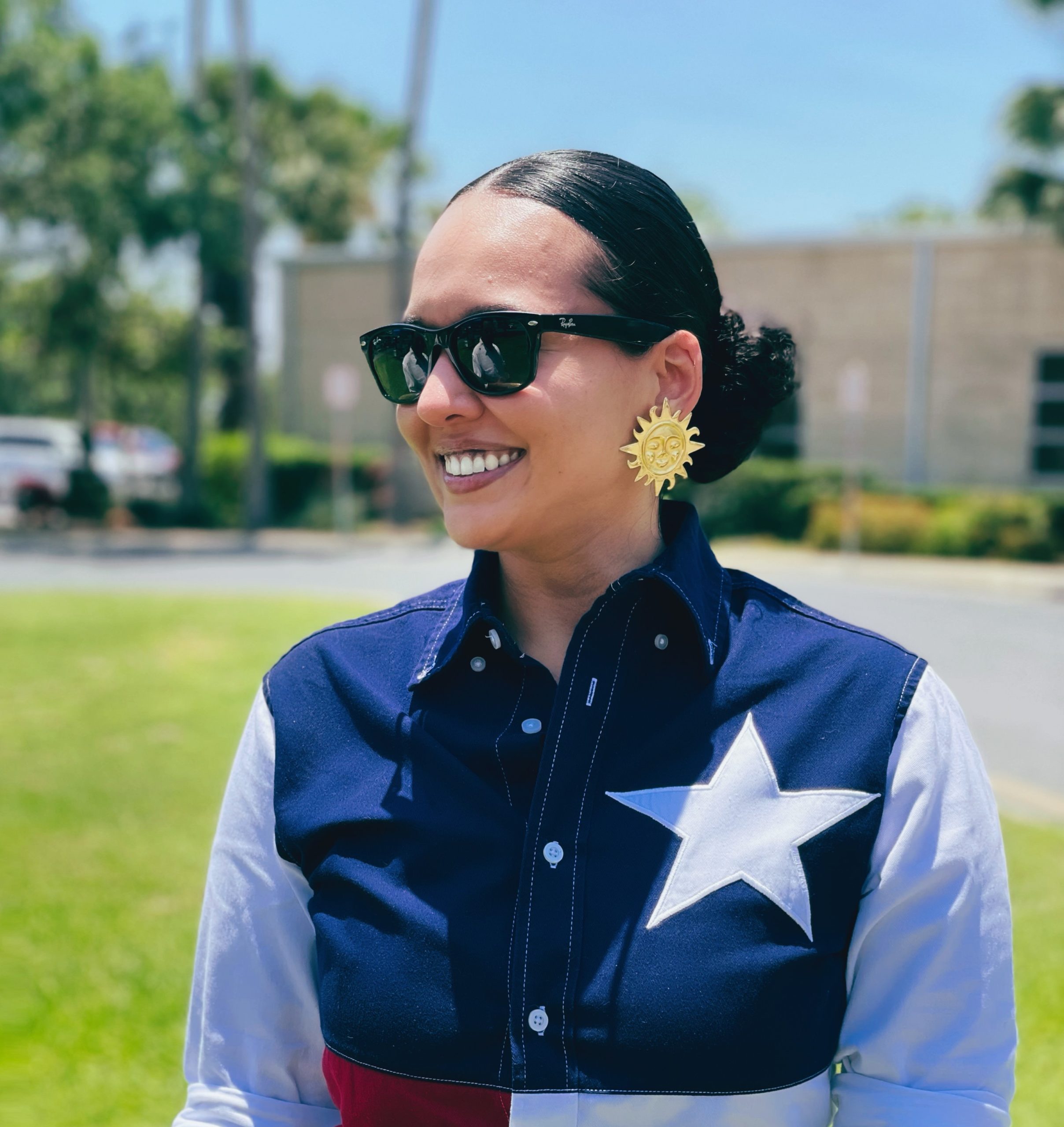
‘We Are People Too’: Scenes of Migration in Matamoros and Reynosa
Even before Biden’s recent executive order, asylum-seekers were waiting for months in dangerous Mexican border towns for an appointment to cross into Texas.

Back in her hometown in the state of Portuguesa, Venezuela, Magnaly Márquez had to make a choice: Buy her 3-year-old son a pair of shoes, or pizza. She didn’t have enough money for both—despite having studied business administration, working in a bank, and juggling side gigs for extra cash. Now, sitting in a charity hospital-turned-migrant shelter in Matamoros, Tamaulipas, Márquez’s eyes welled with tears as she recounted her story.
In November, the 30-year-old single mother decided to leave for the United States with her son, Milands, in tow. They trekked across the Darién Gap, a treacherous stretch of jungle at the Panama-Colombia border. The Gap lacks roads and cell service. Criminal groups run amok. Migrants frequently run out of food and water, relying on untreated streams at the risk of illness or severe dehydration.
When I met her in mid-June, Márquez had been waiting in northern Mexico, just across the river from Brownsville, since February. She hopes to seek asylum, which will ultimately require her to prove she faced a form of persecution beyond financial deprivation. Her home country is engulfed in a long-running crisis that is both political and economic.
“Above all else, one asks for humanity,” Márquez said, sitting on a metal bench in the sweltering summer heat. “We are people too. We are warriors who just want a better life—to work—for our children.”
Márquez is one of thousands of migrants in limbo south of the Rio Grande, awaiting their fate. During Joe Biden’s presidency, seeking asylum has been a fraught and ever-changing process. For much of Biden’s term, ports of entry were effectively closed to most asylum-seekers under an archaic public health measure, Title 42. The administration has opened special pathways for immigrants from certain countries including Venezuela, Haiti, and Cuba. At the same time, Biden has limited the means of requesting asylum by pushing migrants to request lottery-style appointments through an app called CBPOne and clamping down on the well-established right to request asylum even after crossing the border illegally.
In his most dramatic action yet, Biden issued an executive order earlier this month that suspends asylum access between ports of entry when daily crossings exceed a certain threshold. Traditionally, as codified in U.S. law, migrants may request asylum “whether or not at a designated port of arrival.” This order, already challenged by the American Civil Liberties Union, could upend that status quo.

In each country she passed through, Márquez said, she and her toddler-aged son stopped so she could work. They needed more money to continue their journey north. Along the way, she sold arepas and worked in a grocery store and at a printing press. But in Tamaulipas, the state that borders South Texas from Brownsville to Laredo, she said she can’t work. It’s dangerous to leave the shelter.
She said she knows from personal experience: Márquez told me she and her son were grabbed on a bus earlier this year and kidnapped by cartel members in Reynosa for extortion. Such incidents are commonplace in northern Mexico border towns.
Late last year, armed men kidnapped 32 migrants from a commercial bus before abandoning them in a Reynosa parking lot. During former President Trump’s “Remain in Mexico” policy, asylum-seekers were repeatedly unable to attend their U.S. court hearings because they were being kidnapped. On June 14, the U.S. Consulate General in Matamoros sent out a travel advisory, cautioning against travel in nearby Reynosa, across from the McAllen area, due to kidnappings on intercity buses. That advisory was directed at U.S. citizens and residents, but asylum-seekers are specifically targeted for extortion.
As of mid-June, there are around 2,000 asylum-seekers stuck in Reynosa waiting to cross into Texas and an additional 2,000 in Matamoros, according to an estimate from the Sidewalk School, a humanitarian nonprofit that works with asylum-seekers in both cities. I requested estimates from Customs and Border Protection and Mexico’s Instituto Nacional de Migración but have not received responses.
In the Matamoros hospital-turned-refuge, known as the Pumarejo shelter, asylum-seekers wait in limbo for their CBPOne appointments—wait times average several months—spending the day helping run the facility or lying in their tents. Children have the option of attending English, Spanish, and art classes held by the Sidewalk School, but they do not attend local government schools. The adults are often unable to get jobs off-site to earn money; the cartel kidnappings have made it dangerous for migrants to leave the shelter.
Some asylum-seekers in Matamoros find refuge in an impromptu tent camp abutting the Rio Grande, with a clear view of the U.S. border, lined with concertina wire as far as the eye can see. In the encampment, asylum-seekers sleep in makeshift hammocks tied to mesquite trees or tents covered with black and blue tarps. As of mid-June, the area was mostly cleared out. After the Pumarejo shelter opened last August, asylum-seekers sought safety there instead, but around a couple dozen migrants remain in the camp.
The Kaleo International Shelter, a partnership between a Christian missionary organization and the Sidewalk School, is accessible by an unpaved dirt path, tucked away in a sparsely populated Reynosa neighborhood beside a park that’s home to mesquite, nopales, and wild pigs. The property is surrounded by concrete walls and enclosed behind a corrugated metal door.
When I visited, 39-year-old Jorel Bien Aimé was sitting inside waiting to see a doctor. He was suffering from chronic neck and back pain, he said in Spanish. He’d traveled a long road to Reynosa from his hometown in Haiti, spending a few years in Chile, working various jobs to send remittances back to his family. He cleaned streets and plazas and picked blueberries and apples, but his wages often weren’t enough to actually send money home. Now, not having seen his family in six years, he felt depression setting in too.
“I feel very weak—physically, mentally, economically,” he said, covering his face as his hands began to tremble. He said he’s been waiting on his CBPOne appointment, where he will make his case for asylum, for seven months. The Kaleo Shelter mostly houses Haitian migrants.

Wadely Ostin, a former police officer in the Legislative Palace in Haiti’s capital Port-au-Prince, spent months in Reynosa but did not stay at Kaleo. He told me he never wanted to leave his home country. But, in October 2022, he said he started receiving threats to his family. His wife and son fled to the Dominican Republic, where Haitians face widespread discrimination and deportation. One evening as he was leaving work in Haiti, Ostin said members of a criminal gang tried to kill him, shooting at his car as he sped away.
Ostin said he waited close to a year for a CBPOne appointment. Each day, he checked his phone to see if he was selected. Last week, he finally had his appointment and was allowed to enter the United States, where he’ll pursue an asylum claim. After crossing, he sent me a picture of himself inside a car, grinning with his family, in Hidalgo, Texas.
In a phone call earlier this week, Ostin said he was enjoying the most peace he had felt in his life. As we chatted, I could hear his toddler son watching cartoons on a tablet. Now in a small, sleepy city on the Arkansas-Oklahoma border, he sees neighbors chatting and kids playing soccer outside well into the evening—simple pleasures that aren’t safe when it’s dark out in Port-au-Prince or Reynosa.
Here, he said, “I’m not afraid of anything.”



